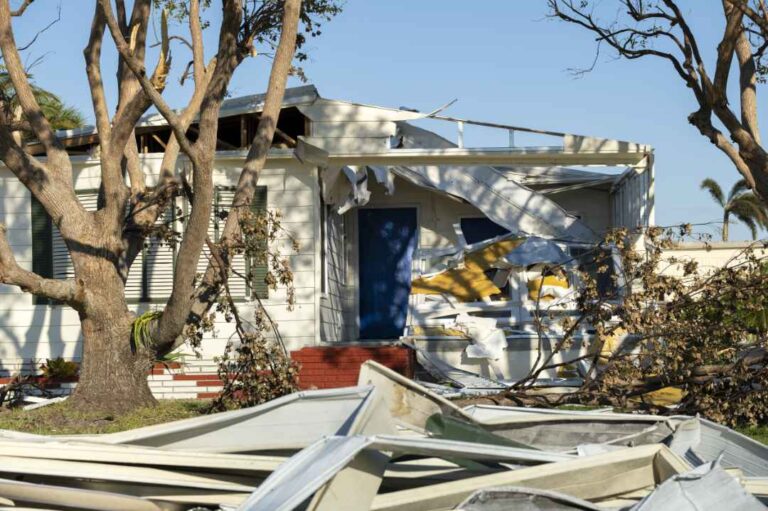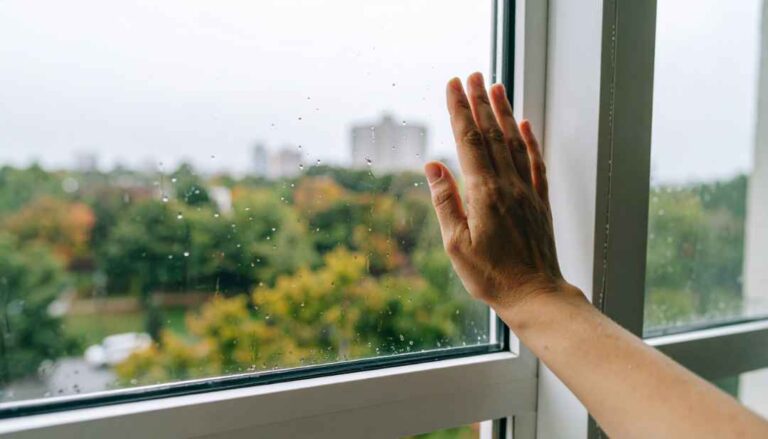The Deceptive Calm – Why Small Hail Damage Isn’t So Small
The Chicagoland area is no stranger to hail. From pea-sized pellets to golf ball-sized chunks of ice, hailstones can descend upon our homes with surprising force. When the storm passes, you might step outside, see a few dimples on your car, and peer up at your roof, thinking, “That wasn’t so bad. I don’t see any big holes.”
However, this seemingly minor hail damage, particularly to asphalt shingles, is often deceptively insidious. What appears to be a mere “bruise” today can silently progress over months or even years, leading to costly leaks and premature roof failure down the line. Ignoring these initial, subtle signs is one of the most common and expensive mistakes homeowners make.
At Seidel Exterior Group, we’ve been expertly diagnosing, repairing, and replacing roofs across Illinois since 1970. We understand the unique lifecycle of hail-damaged shingles in our climate and the importance of early intervention. This article tells the story of a hail-damaged shingle, from its initial impact to the eventual leak, explaining why seemingly minor damage needs immediate professional attention to safeguard your Chicagoland home.
The Anatomy of an Asphalt Shingle (and Where Hail Hits)
To understand hail damage, it helps to know the layers of an asphalt shingle:
- Granule Layer: The top, gritty layer made of ceramic-coated mineral granules. This is the first line of defense, protecting the asphalt from UV rays and weathering, and providing color.
- Asphalt Layer: The waterproof layer beneath the granules. This is what actually sheds water and protects the underlying mat.
- Fiberglass Mat: The core of the shingle, providing its strength and stability.
- Adhesive Strip: A self-sealing strip on the underside that bonds the shingles together once heated by the sun, providing wind resistance.
Hail damage impacts can compromise any or all of these layers, setting in motion a slow but destructive process.
The Lifecycle of a Hail Damaged Shingle: From Bruise to Leak
Let’s trace the journey of an asphalt shingle from the moment it’s struck by hail to the eventual leak in your home.
Stage 1: The Initial Impact – The “Bruise” (Immediate)
- What Happens: A hailstone strikes the shingle with surprising force. Even if it doesn’t create a visible hole, the impact dislodges or crushes the protective mineral granules in a circular pattern. This exposes the underlying, darker asphalt layer. The force of the impact can also create a “bruise” – a soft spot in the asphalt layer, potentially fracturing the fiberglass mat underneath, even without a visible surface crack.
- What It Looks Like: From the ground, you might see small, dark, circular spots (often 1/2 inch to 2 inches in diameter) where granules are missing. It might look like a “dimple” or a “pockmark.” Often, these are subtle and hard to spot unless you’re on the roof or looking from a very specific angle.
- Why It’s Deceptive: No immediate leak is apparent. The integrity of the shingle seems intact from a distance. Homeowners often dismiss these as purely “cosmetic.”
Stage 2: Exposure and Accelerated Degradation (Weeks to Months)
- What Happens: The exposed asphalt layer, now stripped of its protective granules, is directly vulnerable to the sun’s powerful ultraviolet (UV) rays. UV radiation is a primary factor in shingle aging. Without the granules shielding it, the asphalt rapidly dries out, becomes brittle, and begins to oxidize.
- What It Looks Like: The initially dark “bruise” might turn chalky gray or faded as the asphalt deteriorates. Fine, hairline cracks might start to appear, radiating outwards from the impact point. The area around the bruise might become brittle, and more granules may shed with subsequent rains or winds.
- Why It’s Dangerous: The shingle’s water-shedding capabilities are slowly compromised. The brittle asphalt is more prone to cracking and tearing, and the unprotected mat can absorb moisture. The potential for the shingle’s internal structure to fail due to the initial impact also increases over time.
Stage 3: Compromised Integrity and Water Penetration (Months to a Year+)
- What Happens: As the exposed asphalt continues to degrade and the initial “bruise” hardens, the micro-fractures in the asphalt and the underlying fiberglass mat begin to widen. Wind, rain, and particularly the Chicagoland freeze-thaw cycles exert constant stress. Water can now penetrate through the shingle’s compromised surface.
- What It Looks Like: The hail impact area may now show a more pronounced crack, a small hole, or even a tear in the shingle. If the fiberglass mat was fractured, water can now actively seep through it. Below this damaged shingle, on the roof decking, a subtle water stain might begin to appear. This often requires an attic inspection to confirm.
- Why It’s Dangerous: Water is actively reaching the roof decking. This sets the stage for wood rot, mold growth, and compromised insulation in your attic. The longer this goes on, the more extensive and expensive the hidden damage becomes.
Stage 4: The Leak Manifests (Often 1-3 Years After Impact, But Can Be Sooner)
- What Happens: The water that has been seeping through the compromised shingle and saturating the roof decking eventually finds its way through the decking, past insulation, and into your living space.
- What It Looks Like: This is the point where most homeowners finally notice a problem: a visible water stain appears on an interior ceiling or wall. You might see peeling paint, bubbling drywall, or even active drips during heavy rain.
- Why It’s a Problem: By the time you see the leak inside your home, the damage is already significant. The roof decking likely has rot, your insulation is probably compromised (leading to higher energy bills), and mold may have already begun to flourish in hidden wall cavities, posing health risks. The cost to repair has escalated dramatically.
The Importance of Proactive Inspection in Chicagoland
The lifecycle of a hail damaged shingle demonstrates why proactive inspection after any hailstorm in Chicagoland is paramount, even if the damage seems minor from the ground.
- Time is Critical: Most insurance policies have a time limit (often 1 year, sometimes 2 years) from the date of loss (the storm date) to file a claim. If you wait until the leak appears months or years later, you might miss this crucial window, leaving you to pay for the repairs entirely out-of-pocket.
- Insurance Companies and “Functional Damage”: While some initial hail impacts might be dismissed as “cosmetic” (not affecting function or lifespan), an experienced contractor can explain how even a “bruise” can lead to functional damage by compromising the shingle’s integrity and accelerating its demise. Insurance adjusters are looking for functional damage that impairs performance.
- Preventing Escalation: Early detection allows for timely, targeted repairs or replacement, preventing a small issue from becoming a costly structural, mold, or energy efficiency nightmare.
Why Trust Seidel Exterior Group to Diagnose Your Hail Damage
At Seidel Exterior Group, we specialize in understanding the long-term effects of Chicagoland weather, especially hail damage, on roofing materials.
- Expert Diagnostics: Our certified storm damage experts are trained to identify all stages of hail damage – from the subtle bruise to the signs of underlying mat fracture – even if it’s not yet leaking. We know what to look for and how to interpret the condition of your shingles.
- Comprehensive Assessment: We conduct thorough, multi-point inspections that go beyond just the roof, checking for collateral hail damage to gutters, downspouts, siding, and other metal components that can corroborate your claim.
- Insurance Claim Advocacy: We have decades of experience working with insurance adjusters in Illinois. We provide detailed documentation, explain the functional impact of seemingly minor damage, and advocate on your behalf to ensure a fair and comprehensive settlement that covers necessary repairs to restore your roof’s full lifespan.
- Quality Solutions: Whether it’s a precise repair or a full roof replacement, we use high-quality materials and expert installation techniques to ensure your roof is robustly protected against future Chicagoland storms.
Don’t Let the “Bruise” Turn Into a Big Problem
The lifecycle of a hail-damaged shingle is a testament to why vigilance and proactive action are so critical for Chicagoland homeowners. What seems like a minor, harmless bruise today can, over time, become a hidden entry point for water, leading to significant structural damage and costly repairs.
Don’t wait for a leak to confirm hail damage. By understanding how seemingly small impacts evolve into major problems, you can take control and protect your most valuable asset.
If your Chicagoland home has been in the path of a hailstorm, no matter how minor it seemed, don’t delay. Contact Seidel Exterior Group today for a free, comprehensive roof inspection. Let our experts uncover any hidden threats and provide the peace of mind that your home is safe and sound.



